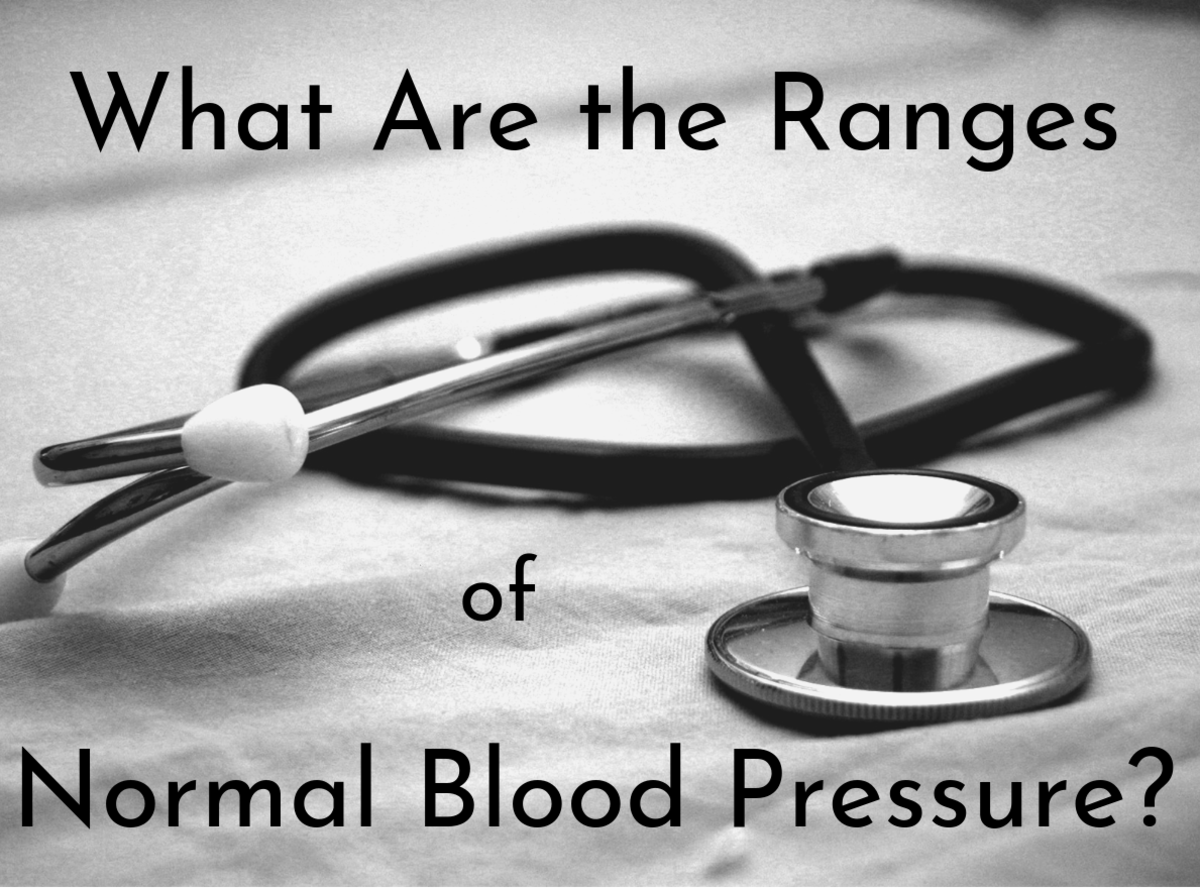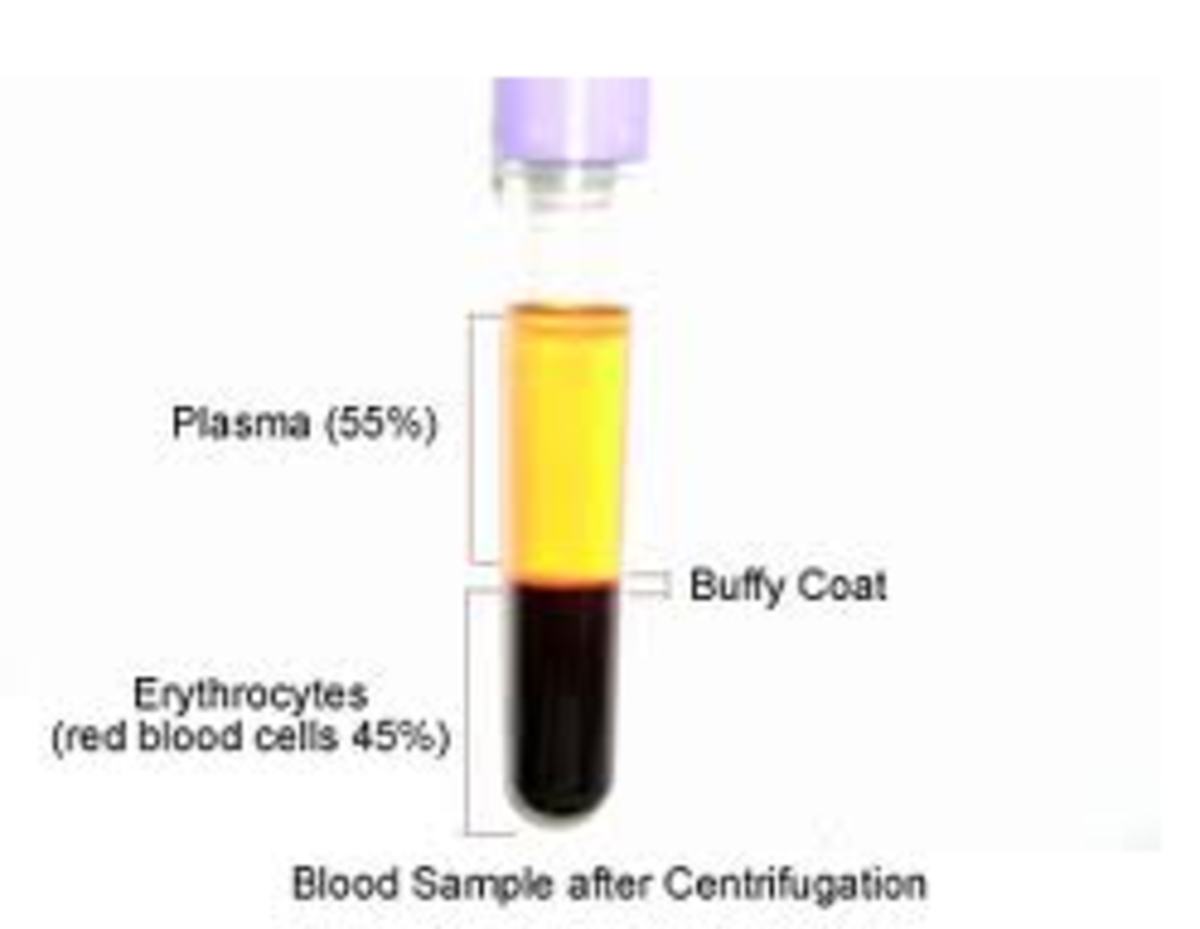The Basics of Performing Medical Vital Signs
Patient Vital Signs
Anthropometric measurements consist of weight and height. Vital signs include blood pressure (BP), temperature (T), respiration (R), and pulse (P). When a patient first visits a medical office, these measurements are recorded as baseline data. Patient vital signs are the most frequently performed procedures in the medical assistant's every day routine.
Vital signs are also called cardinal signs, are measurements of the functions essential to sustaining life.
Patient Weight
The types of scales used to measure weight are balance beam scales, dial scales, or digital scales. Weight measurements are required for the elderly patients, children, infants, and prenatal patients. There are other patients that have medical conditions that require them to have their weight measurements recorded more often than other patients. Weight may be measured in pounds or (lbs.) or kilograms (kg). Also weight measurements are required for patients that are in the process of losing weight, which has to be monitored each doctor's visit.
Patient Height
A patient's height can be read in inches or centimeters, it depends on which type of measurement the doctor wants. Height can be measured against a graph mounted on a wall, or by using a movable ruler on the back of most scales.

Medical Vital Signs
Blood Pressure
The results of a blood pressure reading are recorded as a fraction, with the systolic as the numerator and the diastolic as the denominator (120/80). Diastolic and systolic pressures are measured by using a stethoscope and an instrument called a sphygmomanometer. The mercury-filled glass tube blood pressure measurement is considered to be the most accurate reader. The other blood pressure reader is the aneroid, which has a dial for the readings.
Blood pressure is the pressure of the blood as it is force against the arterial walls. The heart contracts and ejects the blood within it during a phase called systole. As the heart pauses briefly to rest and refill, the arterial pressure drops; this phase is called diastole. As the heart contracts, the highest pressure level is recorded as systolic pressure. When the heart relaxes, the lowest pressure level is recorded as diastolic pressure. The average adult blood pressure is 120/80 with a normal range between 100 and 140 systolic and 60 to 90 diastolic. The patients that have hypertension have pressure readings of greater than 140/90 are considered hypertensive. And patients with lower pressure have readings of 100/60 are considered hypotensive.
Other factors affecting blood pressure include:
- Age
- Medications
- Stress
- Position
- Activity
Body Temperature
The oral temperature is the most common with all other temperatures relating to its average of 98.6° Fahrenheit or 37.0° centigrade. A patient whose temperature is above normal is referred to as febrile, and one whose temperature is normal is said to be afebrile. Temperature is defined as the balance between heat produced and heat lost by the body.
Tympanic Thermometers
A trigger is pulled or a button is pressed and an infrared light bounces off the tympanic membrane (eardrum), recording the body's temperature on the digital screen in 2 seconds. The average temperature measurement for a Tympanic reading is 98.6°T (Fahrenheit Tympanic) or 37.0°.
Anxillary Temperature
This method of measurement is more preferred by patients who were unable to use the oral site. The Anxillary temperature reading may be used for: patients receiving oxygen, mouth breathers, children, or postoperatively for patients who've had oral surgery. The average Anxillary temperature reading is 97.6°A (Fahrenheit Anxillary) and 36.4° centigrade.
Rectal Temperature
The rectal temperature is thought to be more accurate than the oral temperature because of the closed, highly vascular environment of the rectal canal. Rectal temperature readings may never be used for patients that just had rectal surgery and is discouraged for patients with cardiac disorders or seizure disorders. The average temperature measurement for a rectal reading is 99.6° R (Fahrenheit Rectally) and 37.6° centigrade.
Oral Temperature
Measuring temperature orally should not be used for patients after oral surgery, for infants, those receiving oxygen, mouth breathers, or for patients after oral surgery. Oral, rectal, and axillary temperatures have traditionally been measured by the glass mercury thermometer. Mercury is the silver content in an oral thermometer that shows the reading of an accurate temperature. Heat expands the mercury, which rises up the glass column to measure degrees of temperature. Rectal and oral thermometers are never used in exchange of each other. The oral thermometer has a rounded stub with a blue tip; and the rectal thermometer has a rounded stub but with a red tip. Both of these thermometers should have a sheath applied over it before using it for a patient.
Disposable Thermometers
Although many disposable thermometers are fairly accurate, they are not considered as reliable as either electronic or glass thermometers. The dots on the disposable thermometers change colors to indicate temperature. This thermometer is acceptable for screening in special circumstances such as schools or day-care centers.

Anthropometric Measures
The meaning of Anthropometric is the measurement of the size and proportions of the human body. Temperatures that vary from the normal are caused by: age, exercise, gender or hormones, or time of day or diurnal influences. Women usually have a slightly higher temperature than men, especially at the time of ovulation.
Medical assistants are often responsible for cleaning thermometers or the thermometer containers. The glass thermometers have to be cleaned with hot soapy water, and dried thoroughly. Some medical facilities will recommend daily autoclaving.
Electronic Thermometers
Electronic thermometers use portable battery-operated units with sheath-covered probes. Most electronic thermometers are used for either oral or rectal measurements.
Respiration
Observing the rise (inspiration) and fall (expiration) of the chest to count respiration is usually performed as a part of the pulse measurement to obtain an accurate reading. Respiration is defined as the exchange of gases between the atmosphere and blood of the body. The major gases exchanged are carbon dioxide (CO²) and oxygen (O²).
In a healthy adult the average respiratory rate is 14 to 20 breaths per minute. A respiration rate that is much faster than the average is called tachypnea. A respiration rate that is significantly slower than the normal is called bradypnea. When performing a respiration reading on a patient it is best to not let the patient know that you the medical assistant are measuring their respiration rate. You will get a more accurate reading this way, and the patient can't have the chance of changing their breathing pattern just because they know you are watching them.
Pulse Rate
The factors that affect pulse rates are: fever, gender, exercise, medications, stress or emotions, blood volume, body type and size, and time of day. Women have a slightly higher pulse rate than men. Although every artery in the body has a pulse, the pulse usually is measured only at a point where and artery may be pressed against a bone or other underlying firm surface. These are called pulse points.
Rate is defined as the number of heartbeats occurring in 1 minute. Volume is defined as the strength or force of the heartbeat and can be described as soft, bounding, weak, thready, feeble, strong, or full. Rhythm is defined as the time interval between each heartbeat or the patter of the beats.
The variations in pulse rates by age are:
- Birth to 1 year, 110-170
- 1-10 years old, 90-110
- 16 year to midlife, 70-80
- Elderly adult, 55-70
There are factors that affect the force, rhythm, and speed of the heart: older adults, athletes, and young children and infants which have a faster heart rate than adults. In the healthy adult, the average pulse rate is 70 to 80 beats per minute (bpm).
The pulse rate can be read on thumb site of the wrist instead of the pinky-finger side. It's better for the medical professional to check the pulse with their two middle fingers, because it will be easier to detect the pulse.
Healthcare Worker Poll
Are You in the Healthcare Field?
My other article - "Order of Draw for Blood Tubes"
- Order of Draw for Blood Tubes: Health Care Professionals - Mobile Phlebotomist and Paramedical Exami
Memorizing the "Order of Draw for Blood Tubes" can be easy. Did you know that there is no additive in the red top tube? Also, knowing which tests are required for each color top blood tube is important.
© 2012 Brinafr3sh








